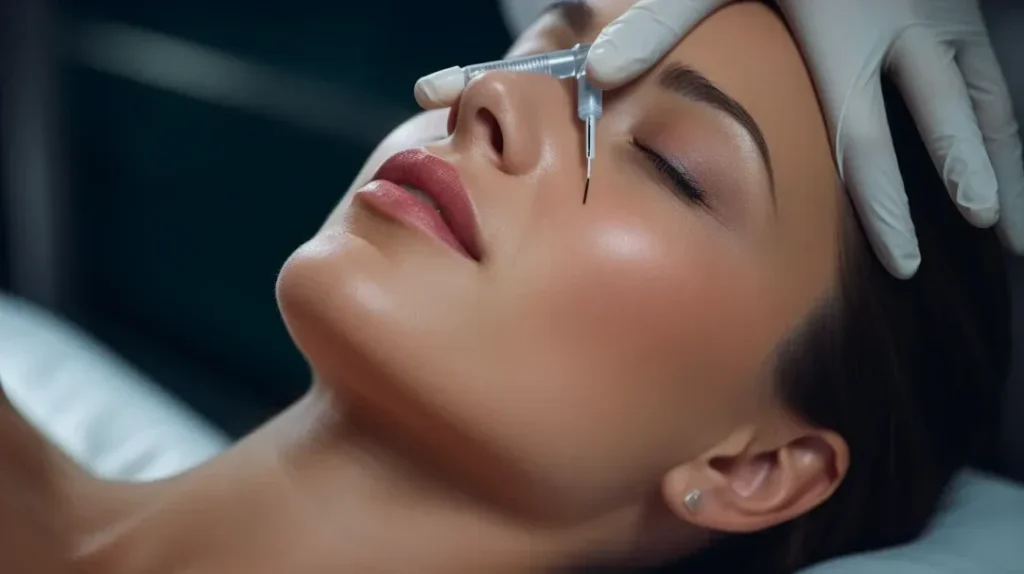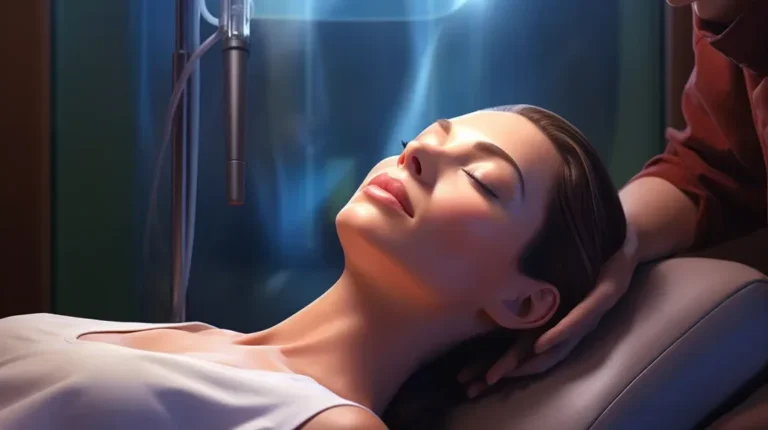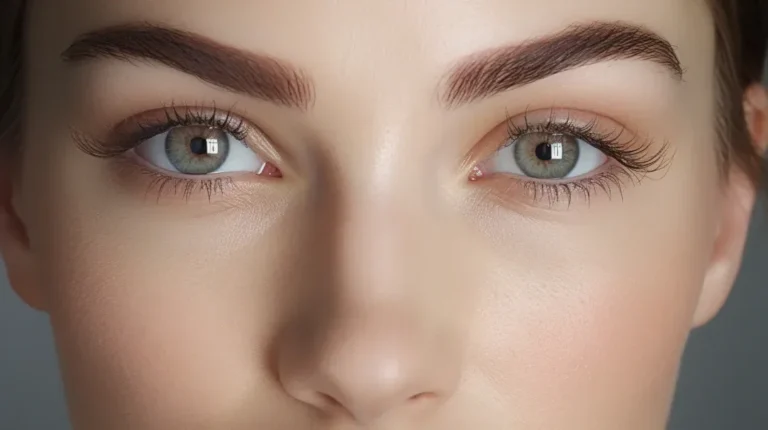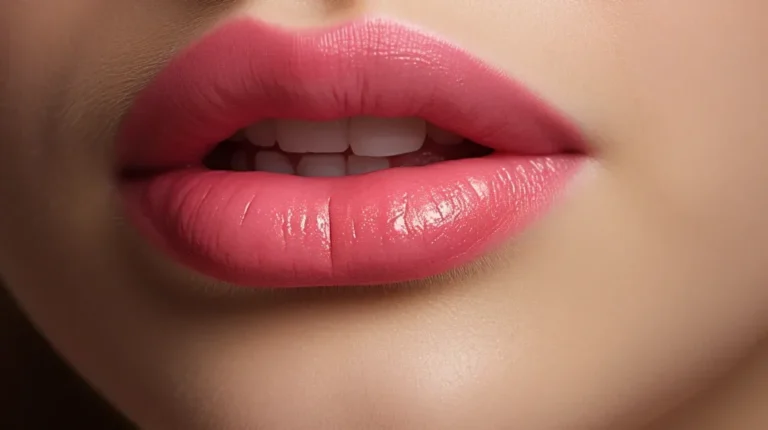Botox for Jaw Clenching: What You Need to Know
Are you tired of clenching your jaw and feeling its constant discomfort? Well, you’re in luck because there’s a treatment gaining popularity that might be the solution you’ve been searching for Botox for jaw clenching.
This article will explore everything you need to know about this treatment option. We’ll cover everything from its effectiveness in relieving symptoms to the procedure details and potential risks.
So, get ready to dive into the world of Botox and find out how it can help alleviate your jaw-clenching woes.
Key Takeaways
- Botox is an effective treatment for relieving symptoms of jaw clenching and TMJ disorders and relieving pain and discomfort.
- The procedure involves injecting Botox into the jaw muscles, with specific injection sites and dosages tailored to each individual.
- Potential risks of Botox for jaw clenching can be mitigated through patient screening and safety protocols.
- Long-term implications of repeated Botox treatments for jaw clenching need to be analyzed to understand their effects on the condition.
Efficacy of Botox for Jaw Clenching
For individuals considering Botox as a treatment for jaw clenching or bruxism, understanding its effectiveness is crucial. Botox, a form of botulinum toxin, has proven to be an efficient non-surgical solution for relaxing the jaw muscles, thereby alleviating symptoms associated with jaw tension.
When Botox is injected into the masseter muscle, it temporarily reduces muscle activity, which can significantly lessen the intensity and frequency of jaw clenching and teeth grinding. This reduction in muscle strain can lead to a decrease in related discomfort and potential dental damage. It’s important to remember, however, that the effects of Botox are not permanent. Typically, patients can expect the results to last around three to four months, after which repeat treatments may be necessary to maintain the benefits.
The cost of Botox treatment for jaw tension can vary based on factors like geographical location and the specific medical provider. One of the advantages of Botox is the minimal recovery time; most individuals can return to their regular activities immediately after the procedure.
For those seeking alternatives to Botox for managing bruxism, other treatments like custom dental guards or physical therapy can be effective options. These alternatives can help in managing symptoms and protecting the teeth from the effects of grinding, thus offering a different approach to addressing jaw clenching.
Botox offers a viable and effective solution for those suffering from jaw clenching, with a quick recovery time and notable improvements in symptoms. However, it’s essential to consider all available options and consult with a healthcare professional to determine the best course of treatment for your specific needs.
Procedure Details for Botox Treatment

Delving into the procedure details of Botox treatment for jaw clenching provides insights into how this method is administered and its typical dosage.
The procedure of Botox Injections for Jaw Clenching
- Targeted Injection Technique: Botox is precisely injected into the masseter muscle, which plays a crucial role in jaw clenching. The procedure is typically quick, using a fine needle, often completed in a 10 to 15-minute session.
- Customized Dosage for Effective Relief: The dosage of Botox for alleviating jaw tension varies based on individual requirements and the severity of clenching. While the average dosage ranges from 25 to 50 units per masseter muscle, it is tailored to each patient’s unique condition by a healthcare professional.
- Mechanism of Action: Botox injections temporarily weaken the masseter muscle, reducing its clenching ability. This results in relief from the discomfort and pain associated with jaw clenching and TMJ disorders.
Consultation and Personalization of Treatment
Consulting a qualified healthcare professional for a personalized treatment approach is essential. Patient selection criteria and injection techniques may vary, highlighting the importance of expert guidance for optimal results.
Research and Long-term Effects
While Botox treatment for jaw clenching has shown promising results, ongoing research is crucial to understand its long-term effects and efficacy fully. Patients considering this treatment should be informed of the current research status to make a well-informed decision.
Risks and Safety Considerations
Understanding the associated risks and safety considerations is essential when contemplating Botox as a treatment option for jaw clenching. Botox, commonly used as a muscle relaxant in various medical conditions, including bruxism and temporomandibular joint (TMJ) disorders, has its set of potential side effects and safety protocols.
Understanding the Risks and Side Effects
- Possible Side Effects: While Botox is generally safe, potential side effects may include localized pain, swelling, or bruising at the injection site, temporary muscle weakness, or asymmetry in facial expressions.
- Contraindications of Botox: Certain medical conditions or medications might contraindicate the use of Botox. It is critical to disclose your complete medical history to your healthcare provider.
The Importance of Patient Education
- Informed Consent: Understanding the procedure, potential risks, and realistic expectations is crucial. Patient education plays a vital role in ensuring informed consent for the treatment.
- Expertise of the Practitioner: The experience and skill of the healthcare provider performing the Botox injections are paramount in minimizing risks and achieving the desired outcome.
Insurance Coverage Considerations
- Navigating Dental Insurance: Coverage for Botox treatments, particularly for dental issues like jaw clenching, may vary between insurance plans. It’s advisable to check with your insurance provider regarding the specifics of your coverage.
Advancements in TMJ and Bruxism Treatments
- Evolving Techniques: Continuous advancements in treatments for TMJ and bruxism contribute to enhanced safety and efficacy, improving patient outcomes.
Exploring Long-term Effects
The long-term effects of Botox on jaw clenching are a vital aspect to consider. Ongoing research and clinical studies contribute to a better understanding of these effects, helping patients and healthcare providers make informed treatment decisions.
In conclusion, while Botox offers a promising solution for jaw clenching, weighing its risks and safety considerations is vital. Discussing these aspects with a qualified healthcare provider will ensure a well-informed decision, considering the treatment’s latest advancements and long-term implications.
Long-Term Effects of Botox on Jaw Clenching
You may experience lasting effects on jaw clenching with long-term use of Botox. Here are some crucial points to consider:
- Patient experiences with jaw Botox: Many patients report significant improvement in jaw clenching symptoms after receiving Botox injections. They often experience reduced muscle tension and decreased facial pain associated with bruxism or TMJ disorders.
- Comparing Botox with other jaw treatments: Botox is a non-surgical option for jaw clenching that provides muscle relaxation. Botox directly targets the muscles responsible for clenching, unlike dental guards or physical therapy, offering more targeted relief.
- Botox as a preventative measure for tooth wear: By reducing the intensity of jaw clenching, Botox can help prevent excessive tooth wear and damage caused by grinding.
- Impact of Botox on facial aesthetics: In addition to its therapeutic benefits, Botox can also enhance facial aesthetics by slimming the jawline and reducing the appearance of a square-shaped face.
- Masseter muscle anatomy: Botox is injected into the masseter muscles responsible for jaw movement. By relaxing these muscles, Botox can alleviate jaw-clenching symptoms.
- Botulinum toxin type A: Botox contains botulinum toxin type A, which temporarily paralyzes muscles and reduces their ability to contract forcefully.
- Dental health and jaw clenching: Jaw clenching can lead to dental problems such as tooth fractures or temporomandibular joint (TMJ) disorders. Botox can help alleviate these issues by reducing muscle tension.
- Aesthetic considerations in Botox treatment: When using Botox for jaw clenching, the dosage and injection sites are carefully chosen to achieve functional and aesthetic results. The treatment is personalized to each patient’s needs and desired outcomes.
It’s essential to consult with a qualified healthcare professional to discuss the long-term effects and benefits of Botox for jaw clenching in your specific case.
Comparative Treatments for Jaw Clenching
While Botox injections are a widely recognized treatment for jaw clenching, several other methods are available that better suit individual needs and preferences. Considering these alternatives is essential to find the most effective and comfortable solution for managing jaw clenching.
- Dental Guards or Splints: Often recommended by dentists, these devices are designed to prevent teeth grinding (bruxism) and reduce the tension in the jaw muscles. They can be custom-made to fit your mouth guard, providing a protective barrier and alleviating the pressure on the jaw.
- Physical Therapy and Jaw Exercises: Engaging in specific exercises and stretches under a physical therapist’s guidance can help relax and strengthen the jaw muscles. This approach aims to improve jaw function and reduce clenching through targeted muscle work.
- Non-Invasive Cosmetic Procedures:
- Facial Massages: Regular facial massages can help relax the muscles involved in jaw clenching. This method is gentle and can provide immediate relief from tension.
- Acupuncture: This traditional Chinese medicine technique involves inserting fine needles into specific points on the body. Acupuncture can effectively reduce muscle tension and stress, often contributing to jaw clenching.
- Pain Management Techniques:
- Medication: Depending on the severity of the symptoms, doctors may prescribe muscle relaxants or jaw pain relievers to manage discomfort associated with jaw clenching.
- Topical Creams: Topical treatments like creams or gels can be applied to the affected area to relieve muscle soreness and tension temporarily.
- Stress Management and Relaxation Techniques: Since stress and anxiety are often linked to jaw clenching, incorporating relaxation techniques like deep breathing, meditation, or yoga can be beneficial.
- Lifestyle Modifications: Simple changes in daily habits, such as avoiding chewing gum or practicing proper jaw alignment, can also help reduce the frequency and intensity of jaw clenching.
Consulting with a dental or medical professional is essential to determine the best course of action based on your condition and health history. They can provide personalized recommendations and help you navigate the treatment options available.
Frequently Asked Questions
Can Botox Completely Cure Jaw Clenching and TMJ Disorders?
Yes, Botox can provide relief from jaw clenching and TMJ disorders. While it may not completely cure them, Botox is a practical, minimally invasive option that can help alleviate symptoms and improve overall quality of life.
How Long Does It Take to See Results After Getting Botox Injections for Jaw Clenching?
After getting Botox injections for jaw clenching, you can expect to see results within a few days to a week. The effects may last for several months, providing relief from jaw tension.
Are There Any Specific Aftercare Instructions Following Botox Treatment for Jaw Clenching?
After getting Botox for jaw clenching, following specific aftercare instructions is essential. These may include avoiding strenuous activity, massaging the treated area, and refraining from touching or rubbing your jaw.
Can Botox Be a Standalone Treatment for Severe Jaw Clenching, or Is It Typically Combined With Other Therapies?
Botox can be used as a standalone treatment for severe jaw clenching, but it is often combined with other therapies for optimal results. Combining treatments ensures a comprehensive approach to managing symptoms and addressing underlying causes.
Are There Any Age Restrictions for Receiving Botox Injections for Jaw Clenching?
There are generally no age restrictions for receiving Botox injections for jaw clenching. However, consulting with a qualified healthcare professional is essential to determine if it is a suitable treatment option for you.
Conclusion
In conclusion, Botox for jaw clenching can be a viable solution for those seeking relief from the discomfort and pain associated with this condition.
Botox injections can help alleviate the tension and restore harmony to your jaw like a gentle breeze that soothes a stormy sea.
However, it’s essential to consider the potential risks and safety considerations before embarking on this treatment journey.
Remember to consult a healthcare professional who can guide you toward the best action for your needs.







